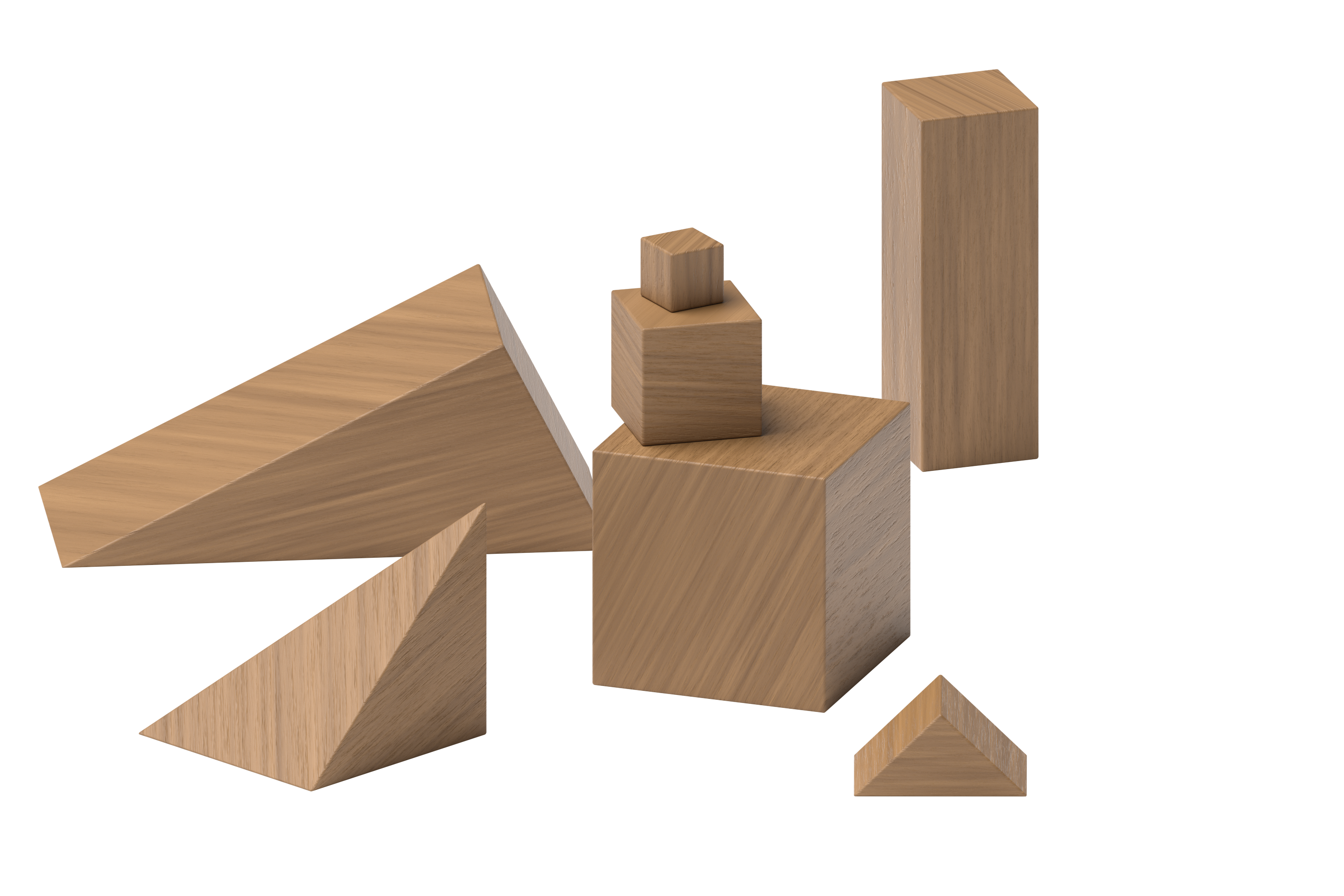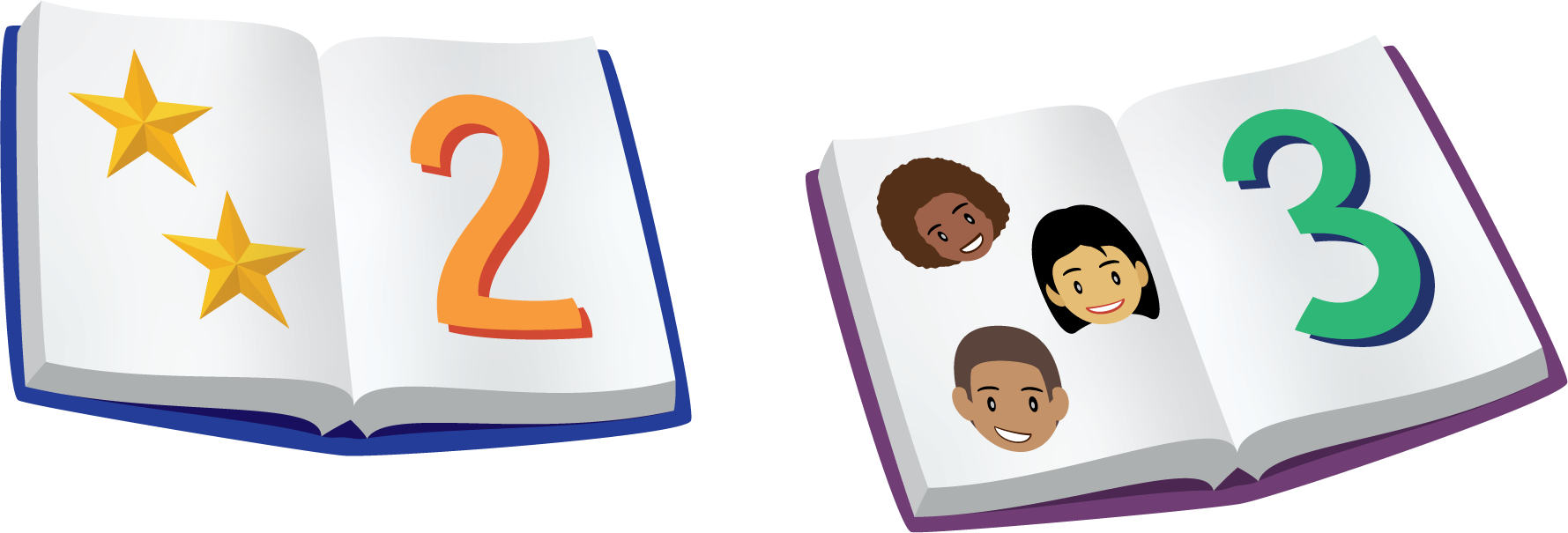Lesson 12
How Many Are There? (Part 1)
Warm-up: Questions About Us: How Many of Us Are Here Today? (10 minutes)
Narrative
The purpose of this warm-up is for students to experience part of the Questions About Us routine. Students continue to engage in this routine throughout the section, focused on answering “How many of us are here today?” In this activity students associate one number with one person as they count the students in the class. As students share answers to questions such as “How can we figure out how many of us are here?” and “Did I count the students correctly?” they are beginning to explain their reasoning and construct viable arguments (MP3).
While the teacher counts the students in the class, students count along to practice the verbal count sequence.
Launch
- “How can we figure out how many of us are here?”
- 30 seconds: quiet think time
- Share responses.
- Monitor for students who suggest touching and counting each student.
Activity
- Count the students, saying one number for each student.
- “How many of us are here today?”
Student Response
For access, consult one of our IM Certified Partners.
Activity Synthesis
- Bring 5 students to the front of the class.
- Demonstrate counting the students incorrectly by saying 2 numbers for 1 student.
- “Did I count the students correctly?”
Activity 1: Counting Collections (15 minutes)
Narrative
The purpose of this activity is for students to count their collection in a way that makes sense to them. The focus is on saying one number for each object. Most students should be given collections with 6–10 objects. Based on formative assessment data collected in previous sections, adjust the number of objects in collections for individual students. Students are provided with counting mats and 5-frames to help them accurately count or organize their collections. Students use appropriate tools strategically as they choose which tools help them count their collections (MP5).
Collections can be created from classroom objects such as connecting cubes, two-color counters, pattern blocks, or buttons. Students can also bring in collections of objects to count from home. Collections of 6-10 objects will be used throughout this section.
A counting mat is provided as a blackline master. Students will continue to use this mat throughout the year. Consider copying the mat on cardstock or laminating it and keeping it organized to be used repeatedly.
Advances: Listening, Speaking
Supports accessibility for: Organization, Conceptual Processing, Language
Required Materials
Required Preparation
- Based on their formative assessment data, each student needs:
- collection of 1–5 objects
- collection of 6–10 objects
- collection of more than 10 objects (optional)
Launch
- Display a collection of 6–10 objects.
- “How can we figure out how many objects are in this collection?”
- 30 seconds: quiet think time
- Share responses.
Activity
- Give each student a bag of objects. Give students access to 5-frames and a counting mat.
- “Figure out how many objects are in your collection. Use the tools if they are helpful.”
- 2 minutes: independent work time
- “Switch collections with a partner. Figure out how many objects are in your new collection.”
- 2 minutes: independent work time
- Monitor for students who say one number for each object.
Student Response
For access, consult one of our IM Certified Partners.
Advancing Student Thinking
If students say more than one number for each object, consider asking:
- “How can the counting mat help you say one number for one object?”
- If needed, prompt students to count as you move each object slowly from one side of the counting mat to the other.
Students may also benefit from the optional activities in the next two lessons.
Activity Synthesis
- Invite previously identified students to demonstrate how they counted their collections.
- “What do you notice about how they counted?”
- If needed, “They said one number as they touched each object.”
- After each student shares, write or display the number and say, “There are _____ objects in their collection.”
Activity 2: Count to 10 [OPTIONAL] (10 minutes)
Narrative
The purpose of this optional activity is for students to practice the verbal count sequence to 10. This activity is optional because it is an opportunity for extra practice that not all students may need. Based on formative assessment data and observation from previous sections and during the first activity, this activity will be helpful for students who are not yet saying the count sequence to 10. English learners in particular will benefit from this additional opportunity to practice the verbal count sequence.
This activity can be used with a small-group or the whole class. Students who do not need this optional activity may benefit from additional time working in centers. Some students may benefit from working on the concepts in this optional activity more than one time. Consider incorporating counting and counting songs throughout the day and during transitions.
Launch
- Groups of 2
- “I’m going to count to 10.”
- Count to 10.
Activity
- “Let’s count to 10 all together.”
- Count to 10 all together.
- “Let’s count to 10 and clap our hands when we say each number.”
- Count to 10 and clap all together.
- “Let’s count to 10 and touch the table when we say each number.”
- Count to 10 and touch the table all together.
- “Let’s count to 10 and put up 1 finger when we say each number.”
- Count to 10 and put up each finger all together.
Student Response
For access, consult one of our IM Certified Partners.
Advancing Student Thinking
If students “sing” the count sequence without separating each number word, prompt them to count slowly and match a gesture or movement with each number.
Activity Synthesis
- “Take turns counting to 10 with your partner. You can clap your hands or touch the table when you say each number. You can also think of your own movement for each number.”
- 1 minute: partner discussion
Activity 3: Introduce Pattern Blocks, Get and Build (20 minutes)
Narrative
The purpose of this activity is for students to learn stage 3 of the Pattern Blocks center. In this center, students use a specified number of each pattern block to create with. While the written number is provided, students can use the images to determine how many pattern blocks they need. For example, 5 blue rhombuses are pictured next to the number “5”. Students can place pattern blocks on top of the images of rhombuses to determine how many they need, which gives students practice in creating groups with the same number. Students may also count to determine how many of each pattern block they need.
After they participate in the center, students choose from any stage of previously introduced centers.
- Connecting Cubes
- Pattern Blocks
- Geoblocks
- Picture Books
Students will choose from these centers throughout the section. Keep materials from these centers organized to use each day.
Required Materials
Materials to Gather
Materials to Copy
- Pattern Blocks Stage 3 Directions
Required Preparation
- Gather materials from:
- Connecting Cubes, Stages 1 and 2
- Pattern Blocks, Stages 1 and 2
- Geoblocks, Stages 1 and 2
- Picture Books, Stages 1 and 2
Launch
- Groups of 2
- Display the student book.
- “What do you notice? What do you wonder?”
- 30 seconds: quiet think time
- 1 minute: partner discussion
- Share and record responses.
- “We are going to learn a new way to do the Pattern Blocks center. It is called Pattern Blocks, Get and Build.”
- “This page shows you which pattern blocks you need. Work with your partner to take out all of the pattern blocks that you need.”
- 3 minutes: partner work time
- Monitor for students who place the pattern blocks on top of the images to determine how many pattern blocks they need.
- Invite previously identified students to share how they determined which pattern blocks they needed.
- “Now you can use your pattern blocks to create whatever you’d like. You can make a robot or a design or something else.”
Activity
- 3 minutes: partner work time
- “Now you can choose another center. You can also continue playing Pattern Blocks.”
- If students want to continue with stage 3 of Pattern Blocks, give them a copy of the blackline master with more pattern blocks they can get and build with.
- Display the center choices in the student book.
- Invite students to work at the center of their choice.
- 10 minutes: center work time
- If time, invite students to choose another center.
Student Facing


Choose a center.
Geoblocks

Connecting Cubes

Pattern Blocks

Picture Books

Activity Synthesis
- “How did you figure out how many pattern blocks you needed?”
Lesson Synthesis
Lesson Synthesis
“Today we counted collections of objects. Where do you see people count?”
Cool-down: Unit 1, Section D Checkpoint (0 minutes)
Cool-Down
For access, consult one of our IM Certified Partners.